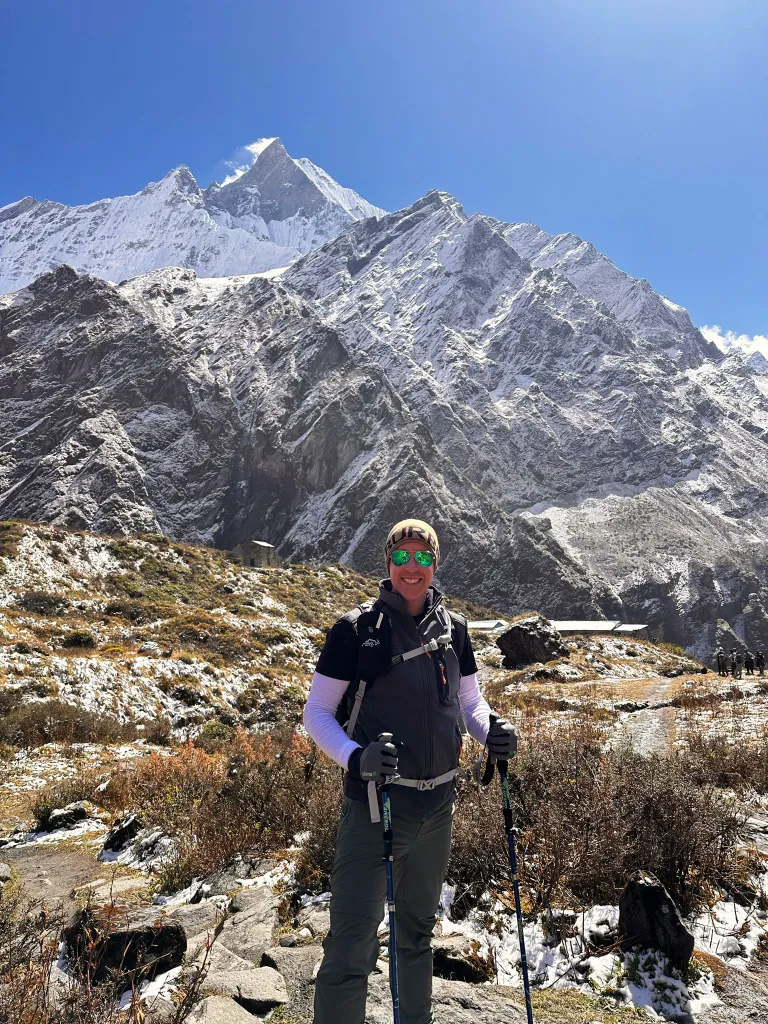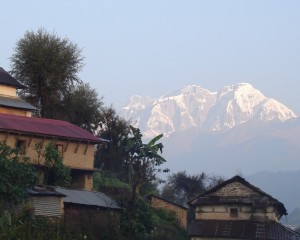Is Manaslu harder than Everest?
Manaslu Circuit Trek is one of the unexplored gems located in the heat of the Manaslu region. Everest Base Camp Trek is the classic trekking route of Nepal, wrapped in the arms of the majestic Everest.
Both of these trekking routes have their own highlights and beauty. Trekkers experience different things on each route. But the major question is: Which one is difficult?
Since Manaslu is less explored and in remote regions, it is assumed to be more challenging. However, this is not the case. Stay with us as we clarify whether Manaslu is harder than Annapaurna.

Overview Everest Base Camp Trek
The Everest Base Camp (EBC) Trek is one of the most iconic and sought-after trekking adventures in the world. It draws adventurers and nature enthusiasts to the heart of the Himalayas in Nepal. The EBC trek is situated in the Sagarmatha National Park, a UNESCO World Heritage Site in the Khumbu region of Nepal. The trek starts and ends in Lukla, which is accessible by a short flight from Kathmandu.
The trek typically lasts 12-14 days and covers a round-trip distance of approximately 130 kilometers. Daily trekking hours range from 5 to 8 hours, and the altitude gain is above 4500m.
Key Highlights
- Stunning Landscapes: Trekkers are treated to awe-inspiring views of some of the highest peaks in the world, including Mount Everest, Lhotse, Nuptse, Ama Dablam, and Thamserku.
- Cultural Experience: The trek passes through traditional Sherpa villages such as Namche Bazaar, Tengboche, and Dingboche. Trekkers can explore ancient monasteries, interact with the warm and hospitable Sherpa people, and experience their unique culture and traditions.
- Iconic Landmarks: Highlights include visiting the Everest Base Camp itself and climbing Kala Patthar (5,545m), which offers one of the best panoramic views of Everest and the surrounding peaks.
- Flora and Fauna: The trek traverses diverse landscapes, from lush rhododendron forests to alpine meadows, offering a chance to see various flora and fauna, including the elusive snow leopard and Himalayan tahr.
Permits and Logistics
To undertake the EBC trek, trekkers need two permits: the Sagarmatha National Park Permit and the TIMS (Trekkers' Information Management System) card. The trek begins with a flight from Kathmandu to Lukla, followed by trekking through a well-defined route with lodges and teahouses available for accommodation and meals.
Difficulty and Preparation
The EBC trek is moderately difficult, primarily due to the high altitude and length of the trek. Proper acclimatization is crucial, and the itinerary includes rest days in Namche Bazaar and Dingboche to help trekkers adjust to the altitude. Trekkers should be in good physical condition, with prior hiking experience beneficial.
Overview of the Manaslu Circuit Trek
The Manaslu Circuit Trek is a rewarding adventure that takes trekkers around the world’s eighth-highest peak, Mount Manaslu (8,163m). Situated in the Manaslu Conservation Area in Nepal, this trek offers a blend of natural beauty and cultural richness. The best part is the unexplored path, which gives trekkers an off-the-beaten-path experience.
The trek circumnavigates Mount Manaslu, starting at the base of the Budhi Gandaki River and ending after crossing the Larkya La Pass(5106m). It typically spans 14 days and covers approximately 177 kilometers. Daily trekking involves 5 to 7 hours of walking, with distances ranging from 10 to 15 kilometers per day at high altitudes.
Key Highlights
- Scenic Views: The trek offers breathtaking views of Mount Manaslu, the Annapurna range, Ganesh Himal, Naike Peak, and Shringi Himal. The trail passes through lush forests, terraced fields, glacial rivers, and high mountain passes.
- Cultural Experience: Trekkers pass through traditional Tibetan-style villages, experiencing the unique blend of Hindu and Buddhist cultures. Highlights include visiting monasteries like Pugen Gompa and Mu Gompa, as well as interacting with the local people who maintain their ancient customs and traditions.
- High Altitude Pass: One of the most dramatic points of the trek is crossing the Larkya La Pass (5,106m), which provides stunning panoramic views and a sense of achievement.
- Remote and Pristine: Unlike more popular treks in Nepal, the Manaslu Circuit Trek is less crowded, offering a more secluded and pristine trekking experience.
Permits and Logistics
Trekkers need multiple permits to undertake the Manaslu Circuit Trek, including the Manaslu Restricted Area Permit, Annapurna Conservation Area Permit (ACAP), and Manaslu Conservation Area Permit (MCAP). As the area is restricted, these permits must be obtained in advance, often with the assistance of a trekking agency.
Difficulty and Preparation
The Manaslu Circuit Trek is considered moderately difficult due to its high altitude, long daily walks, and steep ascents. Trekkers should be physically fit and prepared for high-altitude trekking. The itinerary includes acclimatization days to help trekkers adjust to the altitude, reducing the risk of altitude sickness.
Which one is difficult?
Final Verdict
While both the Manaslu Circuit Trek and the Everest Base Camp Trek present significant challenges, the Everest Base Camp Trek is generally considered more difficult. This is primarily due to its higher altitude, steeper terrain, and greater risk of altitude sickness. The Manaslu Circuit Trek, although longer in distance and duration, has fewer steep ascents and descents and is less crowded, making it slightly less difficult overall.
However, both treks require good physical fitness and preparation for unique and rewarding experiences in the Himalayas. For expert guidance and to make the most of your trekking experience, consider booking with Nepal Vision Treks.
FAQ






